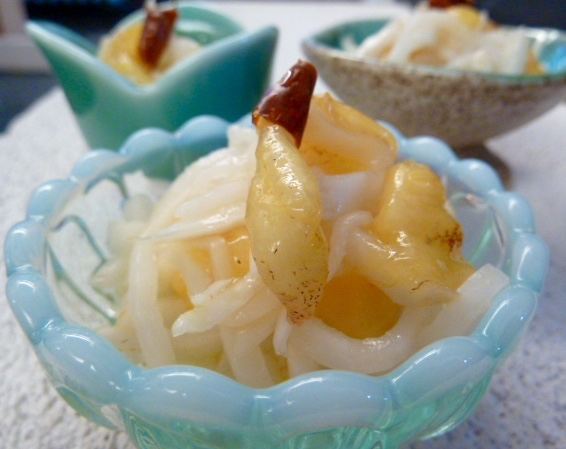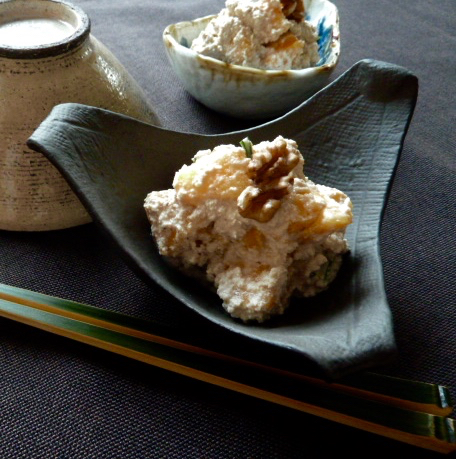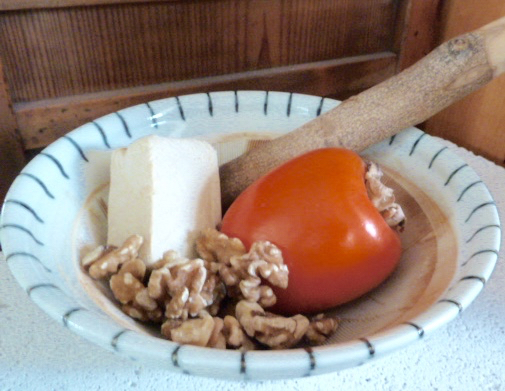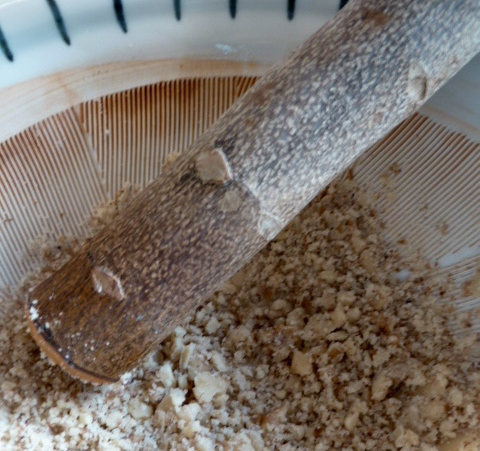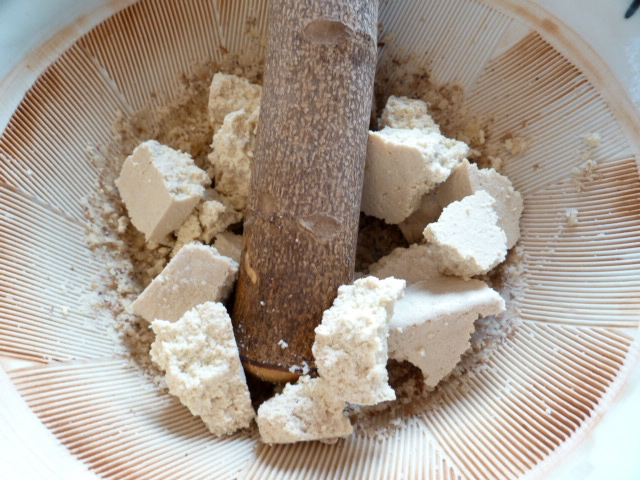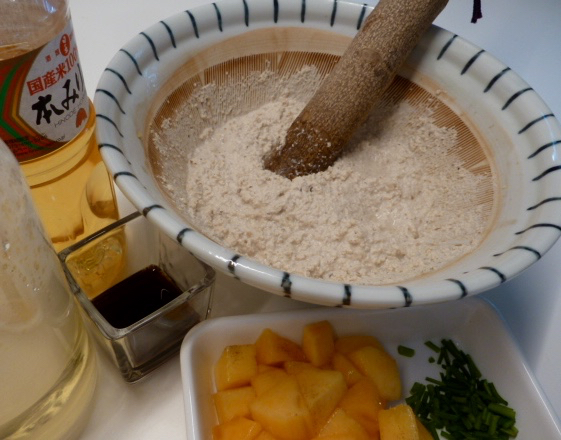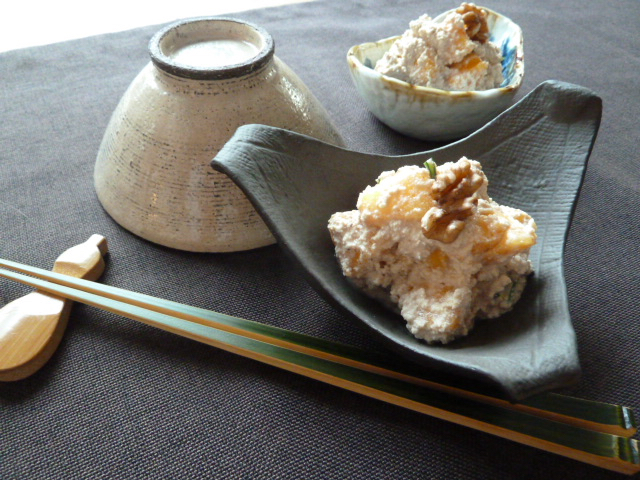I did order more persimmons. Much more. Twenty kilograms, to be precise. Just about when my youngest daughter, who had been eating one big persimmon per day, decided that from now on ‘mikan’, which are mandarins, are her favorite fruits.
So now I have this big pile of wonderful fruit sitting on my terrace waiting to become something delicious. Actually a quite typical situation when you live with the seasons. Something we hardly know anymore, given the year-round-availability of products. We are used to go into the supermarket and find whatever a specific recipe calls for. If it is not in season it might be a lot more expensive and the quality might not be what we would like it to be, but you can be sure to find everything somewhere. Living with the seasons, however means that fruits and vegetables that are available are of excellent quality and taste. This is the good news. The challenge is, that over the course of a vegetable’s season you get a lot of it on your kitchen counter. The art of (Japanese) cooking is therefore not only focus on the seasons, but also to find many creative ways to transform a specific ingredient. This is nothing that happens over night. It requires a rethinking in the way we want to feed ourselves; it requires a lot of practice, joy to experiment, trial and error and patience. But it is certainly doable. You will not only be rewarded with many new dishes and an extension of your repertoire. Grocery shopping will be much faster and easier. No more frustration because the vegetables your recipe calls for are beyond their prime, or the fruits need a couple of days before they are ready to eat, but you dinner is tonight. No more remorse that the fish you are about to buy doesn’t look so appealing anymore, but it is the only one left, so you take it anyway. Living with the seasons means you take home whatever is fresh and looks appealing, knowing you can turn it into something delicious. Give it a shot, it is worth it.
So back to the 20kg persimmons on my terrace. Kaki no Shira-ae (persimmons in tofu sauce) is certainly something that my family likes to eat throughout the persimmon-season, but as much as they do, they don’t like to eat it every day. So we eat our persimmons grilled, dried, pickled, in salads, made into vinegar and maybe even as a pickle medium, because in Japan this is a way to use up overripe fruits. Regular readers of this blog know by now that I don’t get tired to mention that nothing goes to waste in a traditional Japanese kitchen. And this is – again – a wonderful example of it.
But before I will show you the pictures of my Hochigaki (dried persimmons) next week and explain how I am preparing this Japanese delicacy at home, you find a recipe for Achara-zuke (a quick sweet and sour pickle dish) using persimmons and turnips. Achara-zuke is actually a summer dish and can be prepared with lots of different vegetables, but in using fresh persimmons it becomes a winter dish.

Ingredients: Serves 4
- 1 persimmon
- 2 big turnips
- ½ teaspoon Salt
- 125 ml Achara-su* (sweet-sour vinegar)
- 100 ml rice vinegar
- 60 suigar
- 25 ml dashi (for a vegan dish use kombu-Dashi)
- ½ dried Togarashi (Japanese chili), without seeds, alternatively you can use deseeded, fresh chili
Method
Combine all ingredients for the Achara-su except the togarashi (Japanese chili) in a non-reactive pot, stir while heating it over medium heat until the sugar dissolved completely. Remove from the heat, add the togarashi and let cool to room temperature.
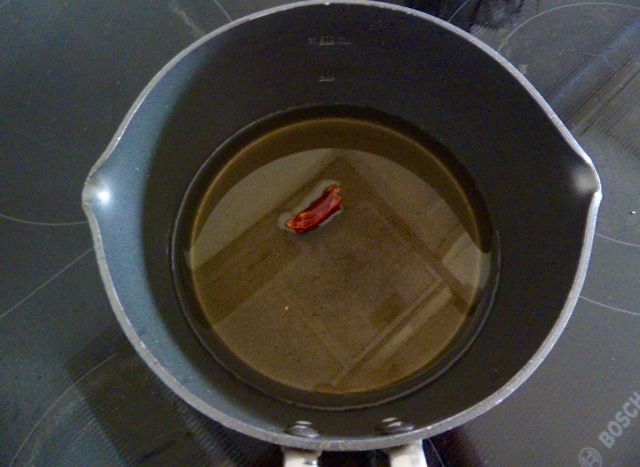
In the meantime wash and julienne the turnips. Sprinkle them in a bowl with some salt, gently mix and let them sit for about 15 minutes to draw out the liquid. While this is happening peel and cut the persimmons into fairly thin stripes (save the peels if you are into fermenting).
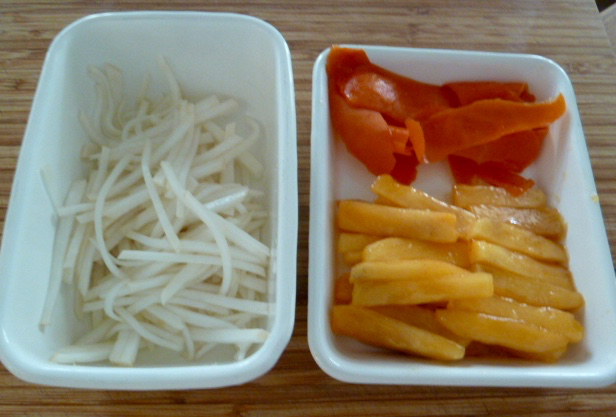
Rinse and drain the turnips and gently squeeze out any excess water with your hands. They should taste slightly sweet and a bit salty and should be flexible, but still crisp. If they are too salty – rinse, drain and squeeze them again.
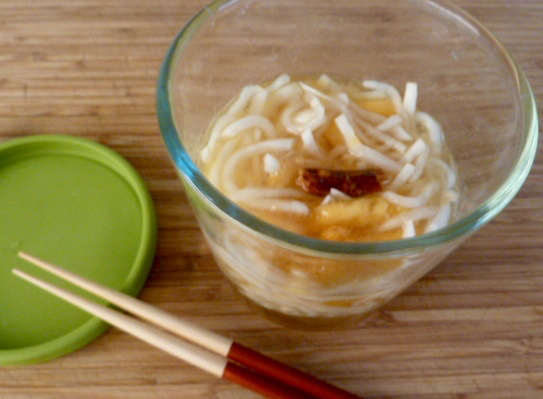
Mix the turnips with the persimmons and submerge them in Achara-su for about an hour before serving them in small dishes. When plating, I like to add a small piece of togarashi on top to alert people that it is a spicy dish.
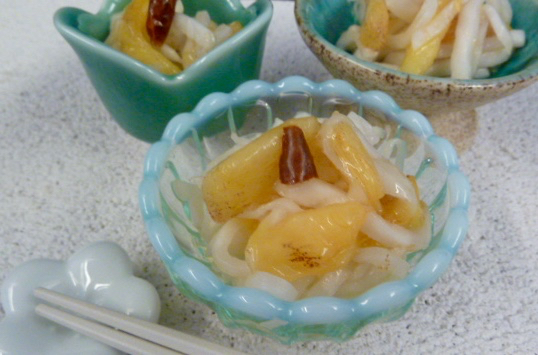
______________________
* Tip: If you like Achara-zuke double or even triple the recipe for Achara-su. It keeps well and if you have it on hand preparing Achara-zuke is a matter of minutes.
